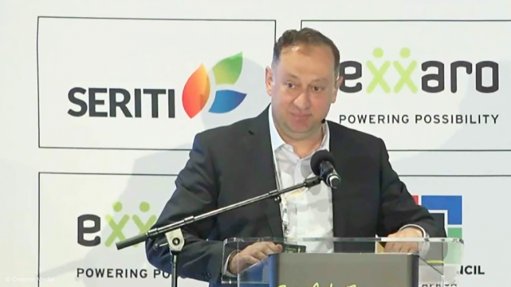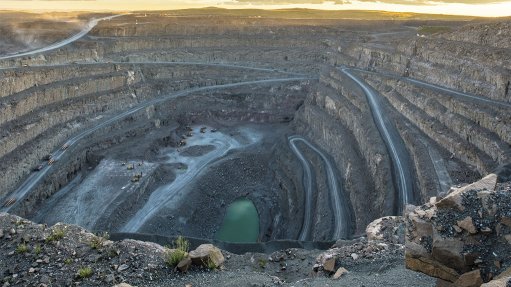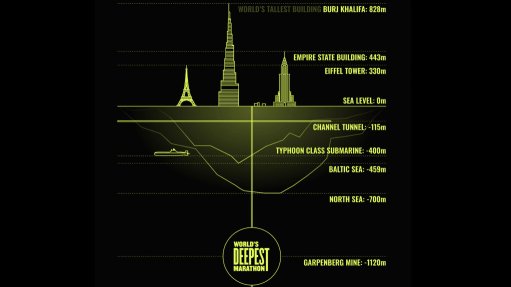Exposure limits for Diesel Particulate Matter in South Africa
This article has been supplied.
Diesel Particulate Matter (DPM), also known as black smoke or soot, is a significant pollutant from diesel engines. DPM consists of fine and ultra-fine particles that can deeply penetrate the lungs, posing severe health risks.
The International Agency for Research on Cancer (IARC) and the World Health Organization (WHO) have classified DPM as a Group 1 carcinogen, underscoring its potential to cause cancer. Reducing DPM in the workplace, has become increasingly more important. To understand it’s importance and implement reduction strategies, one must also understand the exposure limits for Diesel Particulate Matter.
With the above information in mind, the question that arises for many businesses is: What are the exposure limits for Diesel Particulate Matter worldwide and more specifically in South Africa?
Let us explore the answer to this important question:
What are the Health Impacts and Regulatory Standards surrounding Diesel Particulate Matter (DPM)?
Exposure to DPM is most common in environments like mines, factories, and storage facilities where diesel-powered equipment operates. The Australian Institute of Occupational Hygienists (AIOH) recommends keeping DPM levels below 100µg/m³ over an 8-hour average, measured as submicron elemental carbon (EC).
In South Africa, regulations under the Mine Health and Safety Act (Act 29 of 1996) aim to control DPM exposure in the mining sector. While there are no personal occupational exposure limits for DPM, mining companies must conduct risk assessments and implement mitigation measures.
What are the exposure limits for Diesel Particulate Matter?
The Australian Institute of Occupational Hygienists (AIOH) has issued updated guidelines on diesel exhaust particulate and health risks. The document retains the original recommendation that levels of DPM should be controlled to; below 100µg/m³, as an 8-hour average value, measured as submicron elemental carbon (EC).
In South Africa, the regulatory authority (Department of Minerals and Energy) for Mine Health and Safety would normally promulgate regulations controlling the exposure of the workforce to below a specified Occupational Exposure Limit (OEL), which has a similar definition to a TLV. Under the Mine Health and Safety Act (Act 29 of 1996) a Guideline for a Mandatory Code of Practice on the use of diesel engines should also be considered from a health and explosion prevention perspective. The South African Bureau of Standards (SABS) also publishes engine performance standards that can be made legally binding to OEMs and industry when referred to in legislation.
There are currently no personal occupational exposure limits or legally binding tailpipe emissions standards in South Africa for DPM. Mining companies are however obliged to conduct risk assessments in terms of Section 11 of the Mine Health and Safety Act (Act 29 of 1996) on all factors that could adversely affect the health and safety of the workforce and institute appropriate mitigation measures. Where no local regulations exist, international best practice should be utilised. OEMs are also required to provide full disclosure, in terms of Section 21 of the Mine Health and Safety Act (Act 29 of 1996) of the health and safety impact of the equipment being sold to a mining company and provide advice on appropriate measures that can be taken to eliminate or reduce the risk.
The Group Environmental Engineers “GEE” committee recognized that several International Agencies have imposed limits for DPM, but also that these limits have been developed in countries where:
- Higher quality diesel fuel with low sulphur content is used;
- Latest generation diesel engines are used;
- Maintenance staff is adequately trained and available for employment to work on these units; and
- Exhaust purification and filter systems are used extensively.
To this extent, the GEE’s recommendation for action was to introduce an interim DPM exposure control value and gradually lower this exposure control value by means of a “phased-in” approach as follows:
- A DPM exposure control value of 350µg/m3 (TC) up to 31 December 2013;
- A DPM exposure control value of 250µg/m3 (TC) for 01 January 2014 to 31 December 2014;
- A DPM exposure control value of 200µg/m3 (TC) for 01 January 2015.
As of 01 January, 2016 a DPM exposure control value of 160ug/m3 (TC) was supposed to be adopted. This level was however also subjected to review should new knowledge on the risks associated with excessive exposure to DPM become available.
At the date of the GEE’s position, the exposure limits in Australia, Canada, United Kingdom and United States of America were as follows and were based on the measurement of particulate constituents as indicated in the table below:
Regulatory/Agency Exposure Guidelines/Limits Substance Measured
- Canada (Ontario) 400µg/m³ Total Carbon(TC)
- US MSHA 160µg/m³ Total Carbon(TC)
- Australia 160µg/m³ Total Carbon(TC)
- Australia 120µg/m³ Elemental Carbon(EC)
Internationally, DPM is regulated via two mechanisms i.e. Occupational Health and Safety Standards and Tailpipe Emission Standards. Where diesel engines are used in confined spaces, their operation is regulated by occupational health standards in addition to tailpipe emissions.
How businesses can be proactive
Although there are currently no personal occupational exposure limits or legally binding tailpipe emissions standards in South Africa for Diesel Particulate Matter, international guidelines and standards will have to lead businesses in South Africa to be proactive in ensuring health and safety for workers exposed to such emissions.
John Ratcliffe is at the forefront of assisting companies to proactively address DPM emissions, reducing risks for health or safety issues to arise in the future. Our solutions are technologically advanced, and can businesses help address exposure limits and ensure elimination and reduction of possible risks.
Comments
Press Office
Announcements
What's On
Subscribe to improve your user experience...
Option 1 (equivalent of R125 a month):
Receive a weekly copy of Creamer Media's Engineering News & Mining Weekly magazine
(print copy for those in South Africa and e-magazine for those outside of South Africa)
Receive daily email newsletters
Access to full search results
Access archive of magazine back copies
Access to Projects in Progress
Access to ONE Research Report of your choice in PDF format
Option 2 (equivalent of R375 a month):
All benefits from Option 1
PLUS
Access to Creamer Media's Research Channel Africa for ALL Research Reports, in PDF format, on various industrial and mining sectors
including Electricity; Water; Energy Transition; Hydrogen; Roads, Rail and Ports; Coal; Gold; Platinum; Battery Metals; etc.
Already a subscriber?
Forgotten your password?
Receive weekly copy of Creamer Media's Engineering News & Mining Weekly magazine (print copy for those in South Africa and e-magazine for those outside of South Africa)
➕
Recieve daily email newsletters
➕
Access to full search results
➕
Access archive of magazine back copies
➕
Access to Projects in Progress
➕
Access to ONE Research Report of your choice in PDF format
RESEARCH CHANNEL AFRICA
R4500 (equivalent of R375 a month)
SUBSCRIBEAll benefits from Option 1
➕
Access to Creamer Media's Research Channel Africa for ALL Research Reports on various industrial and mining sectors, in PDF format, including on:
Electricity
➕
Water
➕
Energy Transition
➕
Hydrogen
➕
Roads, Rail and Ports
➕
Coal
➕
Gold
➕
Platinum
➕
Battery Metals
➕
etc.
Receive all benefits from Option 1 or Option 2 delivered to numerous people at your company
➕
Multiple User names and Passwords for simultaneous log-ins
➕
Intranet integration access to all in your organisation


















